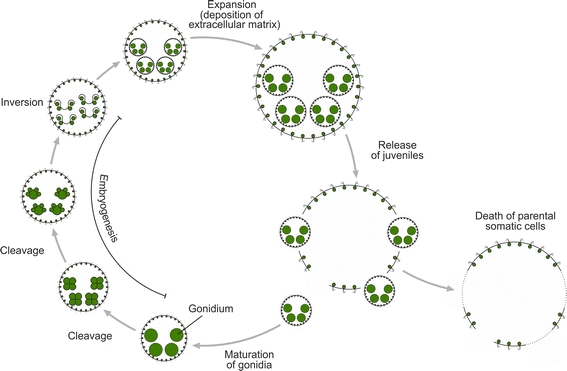Fig. 5.

The asexual life cycle of V. carteri. Asexual development in males and females is indistinguishable. During embryogenesis, mature asexual reproductive cells (gonidia) undergo a rapid series of 11–12 cleavage divisions, some of which are asymmetric. The larger cells resulting from these unequal divisions will become the gonidia of the next generation, whereas the smaller cells will become part of the somatic cell population. At the end of cleavage, the embryo is inside out with respect to the adult configuration: its gonidia are on the outside, and the flagella of its somatic cells are pointing toward the interior of the sphere. A morphogenetic process called inversion brings the embryo into its adult configuration through a series of cell movements that resemble gastrulation in animal embryos (Kirk et al. 1982). The juveniles expand by the deposition of ECM and then hatch from their parent spheroid during a process called release. The somatic cells of the parent, lacking reproductive cells and thus incapable of further cleavage, undergo senescence and die, while the gonidia of the juvenile spheroids mature. Under standard conditions (Starr 1969), the asexual life cycle takes 48 h. For clarity, only 4 of the ~16 gonidia/embryos/descendant spheroids are shown within each parent spheroid. Photomicrographs of asexual males and females are shown in Fig. 6a, b
